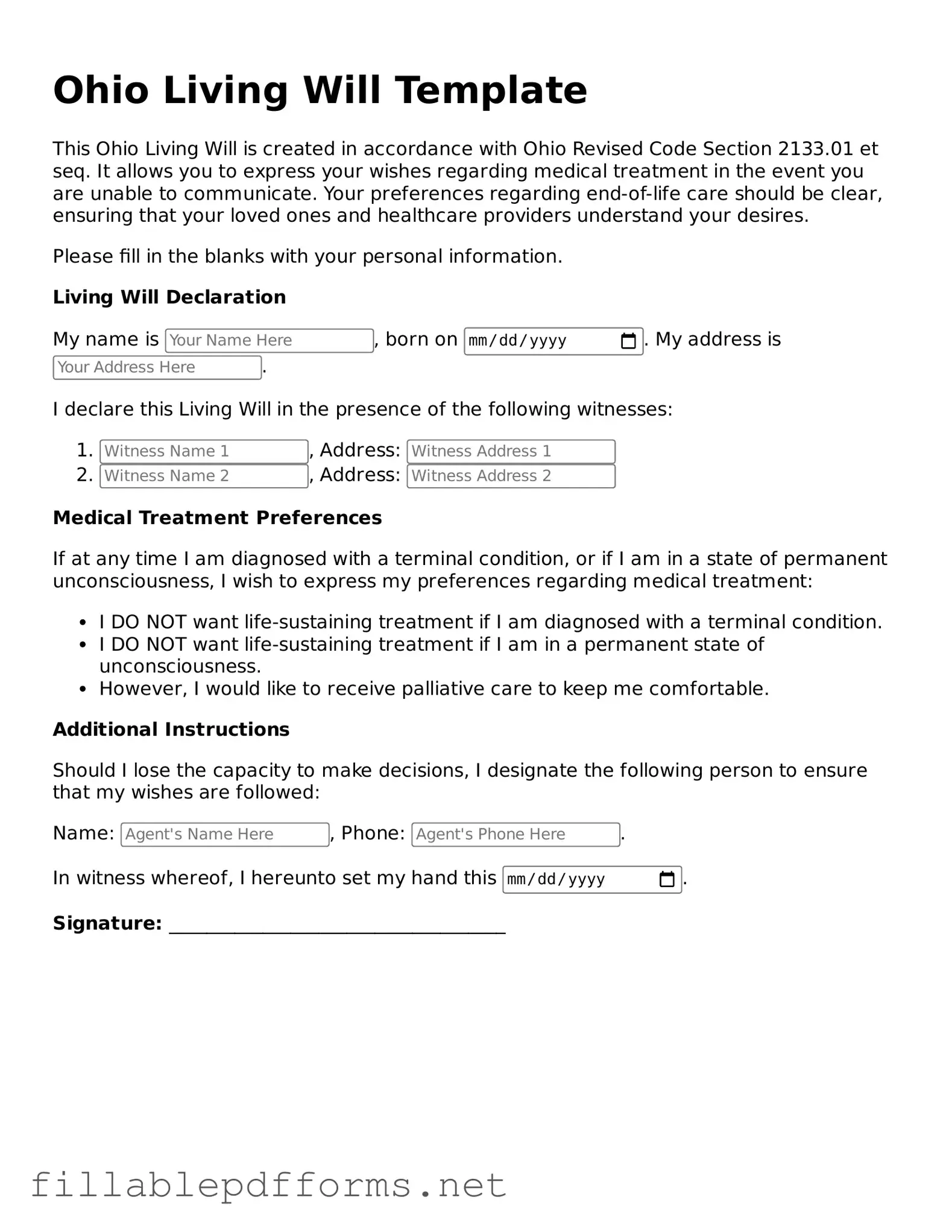In Ohio, the Living Will form serves as a crucial tool for individuals wishing to express their healthcare preferences in the event they become unable to communicate their wishes. This legal document outlines specific medical treatments and interventions that a person does or does not want to receive, particularly in situations involving terminal illness or irreversible conditions. By completing a Living Will, individuals can ensure that their values and desires regarding end-of-life care are honored, alleviating the burden on family members who may otherwise face difficult decisions during emotionally charged times. The form allows for customization, enabling individuals to specify their preferences about life-sustaining treatments, pain management, and other critical healthcare decisions. Additionally, it is essential for Ohio residents to understand the importance of having this document in place, as it not only provides clarity for healthcare providers but also fosters peace of mind for both the individual and their loved ones. Taking the time to complete a Living Will can be a meaningful step toward maintaining control over one’s healthcare journey, even when one can no longer voice their choices directly.
